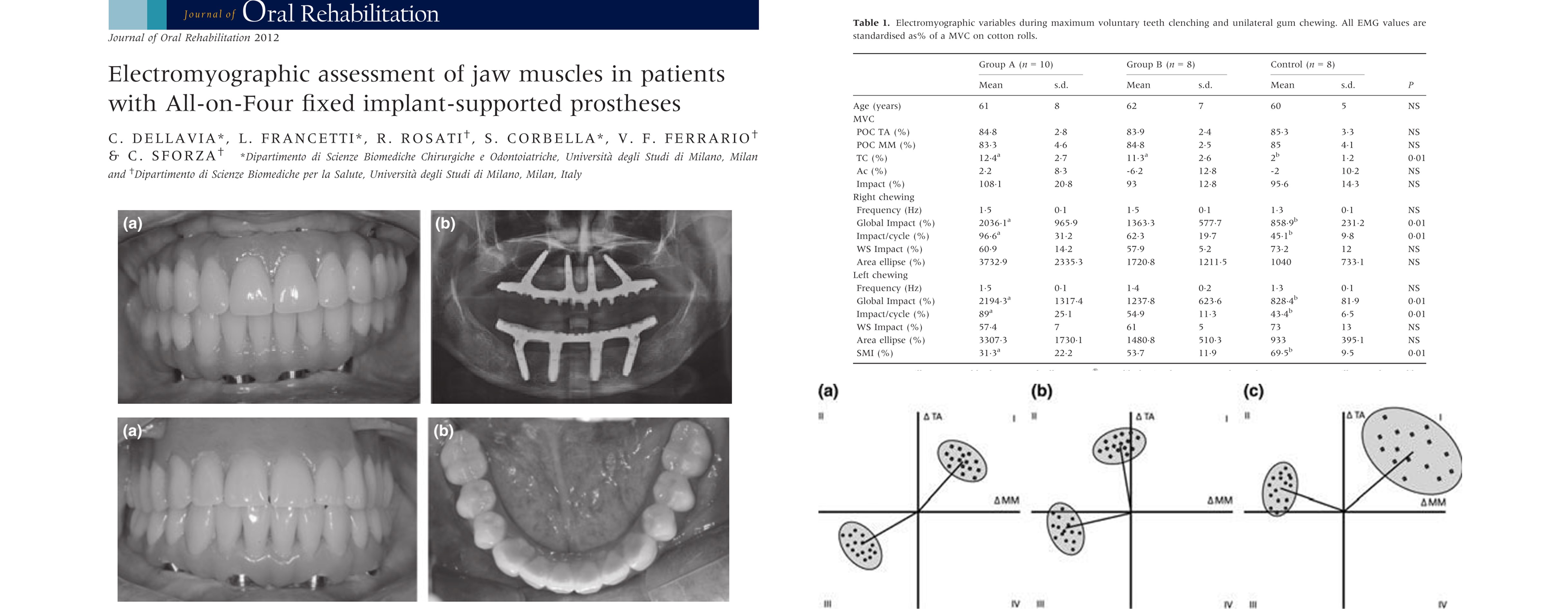Electromyographic assessment of jaw muscles in patients with All-on-Four fixed implant-supported prostheses
This study evaluated the electro- myographic (EMG) characteristics of masticatory muscles in patients with fixed implant-supported prostheses according to All-on-Four® principles and in control healthy dentate subjects. Twenty- six subjects aged 50–74 years were examined. Eighteen were edentulous and had been successfully rehabilitated with (i) mandibular All- on-Four® implant-supported fixed prostheses and maxillary complete dentures (10 patients) and (ii) mandibular and maxillary All-on-Four® implant- supported fixed prostheses (eight patients). Eight reference subjects had natural dentition. Surface EMG recordings of the masseter and temporalis muscles were performed during maximum voluntary teeth clenching and during unilateral gum chewing. All values were standardised as percentage of a maximum clenching on cotton rolls. During clenching, a good global neuro- muscular equilibrium was found in all parti- cipants. During chewing, all groups had similar values of working-side muscle activities and of chewing frequency. No significant differences in the analysed EMG parameters were found between the patients with mandibular and maxillary All- on-Four® implant-supported prostheses and the reference subjects. In contrast, standardised pooled muscle activities and standardised muscular activities per cycle were larger in patients with a maxillary removable prosthesis than in control subjects (Kruskal–Wallis test, P < 0?01). Also, patients wearing a complete maxillary denture showed a poor neuromuscular coordination with altered muscular pattern and lower values of the index of masticatory symmetry than dentate control subjects (P < 0?01). EMG outcomes suggest that All-on-Four® implant-supported prostheses may be considered a functionally efficient treat- ment option for the rehabilitation of edentulous patients with reduced residual bone volume.

